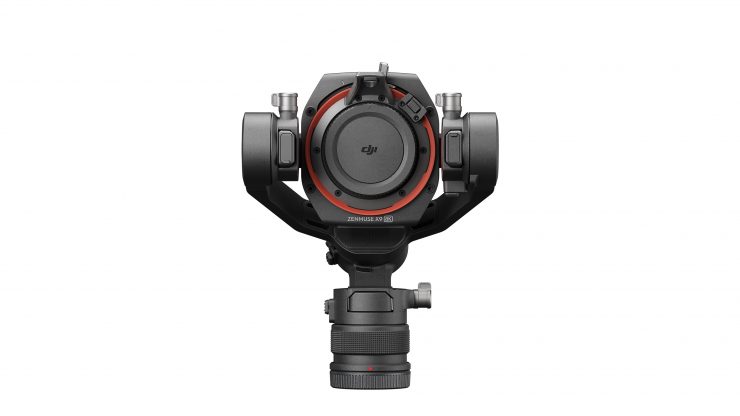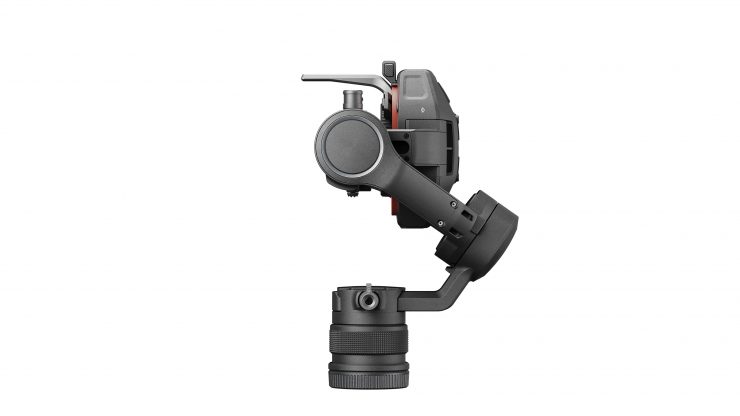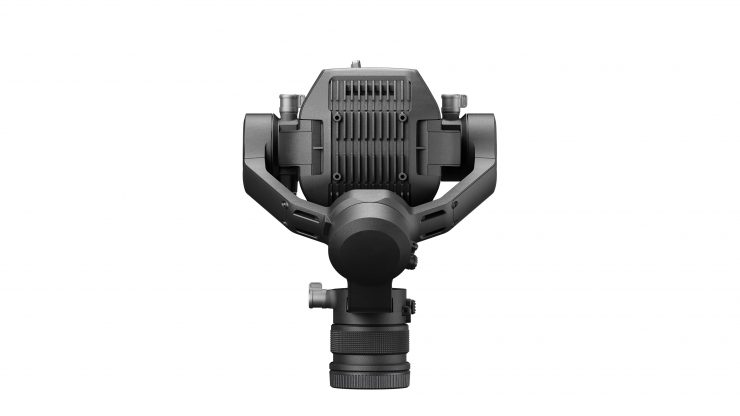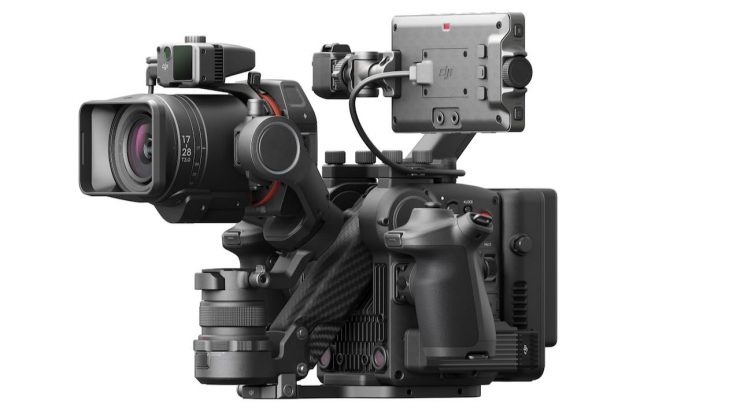
DJI is finally shipping the Ronin 4D-8K, more than 3 years after it was first announced. The 4D-8K is a fully integrated camera and gimbal solution that can capture 8K up to 75ps in ProRes. It also features an optional LiDAR focusing system and wireless transmission and control system.
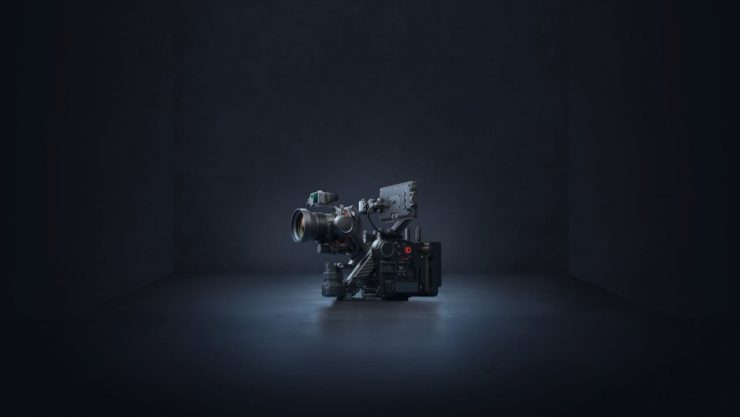
The Ronin 4D-8K features a full frame sensor and it is capable of recording 8K/60fps and 4K/120fps.It also has a 800/4000 Dual-Native ISO and a claimed dynamic range of 14.7 stops.
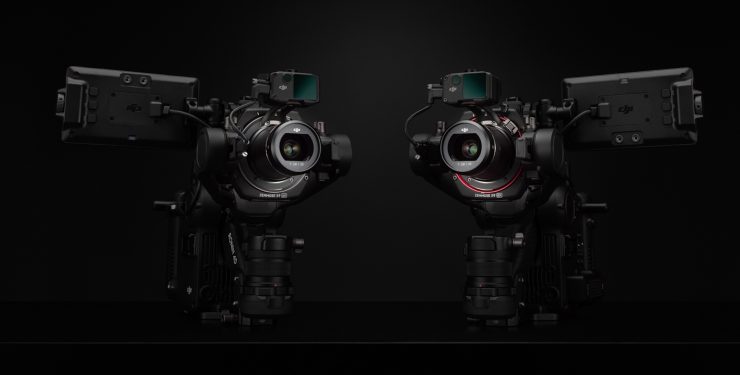
There were two versions of the DJI Ronin 4D announced back in October 2021:
The DJI Ronin 4D-6K has been out for many years now, and I think a lot of people had forgotten about the 4D-8K. I am still not quite sure why it has taken so long to actually become available.
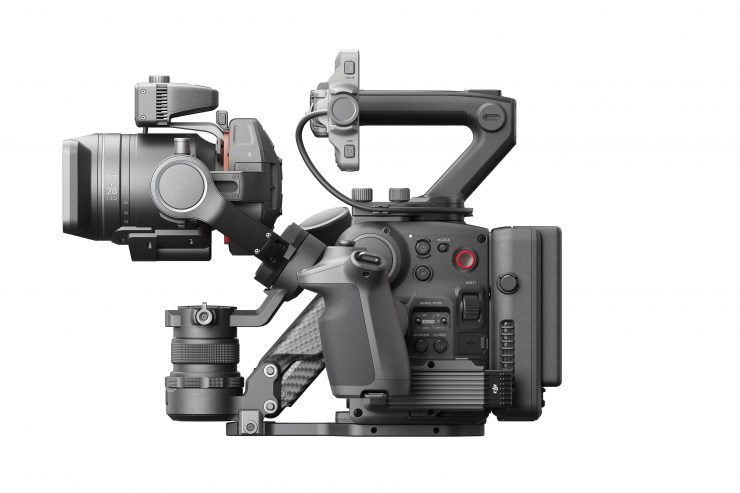
The DJI Ronin 4D platform was designed to give users an all-in-one stabilized camera solution. Instead of having to add a camera to a gimbal, DJI designed the Ronin 4D to incorporate everything in one package. This is great because you can pick it up and shoot straight away without having to worry about attaching a camera and a variety of other peripherals.
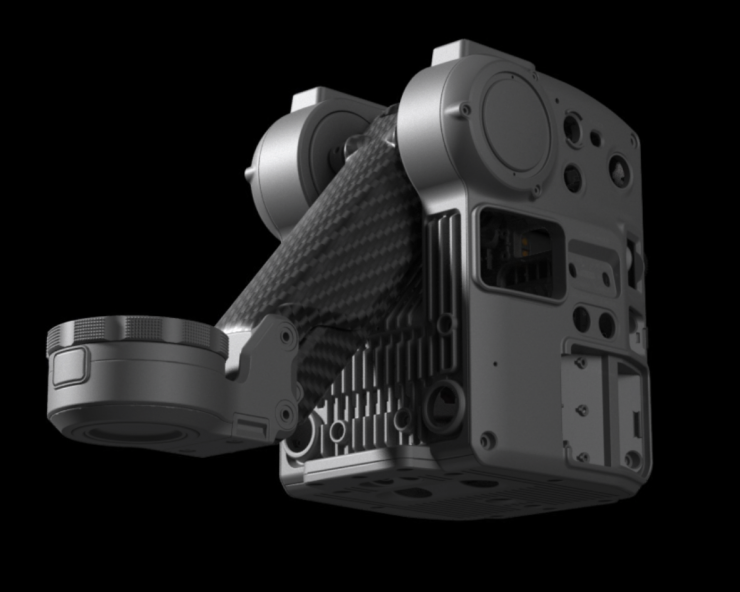
The main body of DJI Ronin 4D is crafted with aluminum-magnesium alloy and the Z-axis arm with carbon fiber. It has physical dimensions of 235×115×160 mm (main body). The main body weighs Approx. 1.45 kg, however, the whole set-up weighs approx. 4.67 kg (after installing all modules in the combo, excluding lens and storage card).
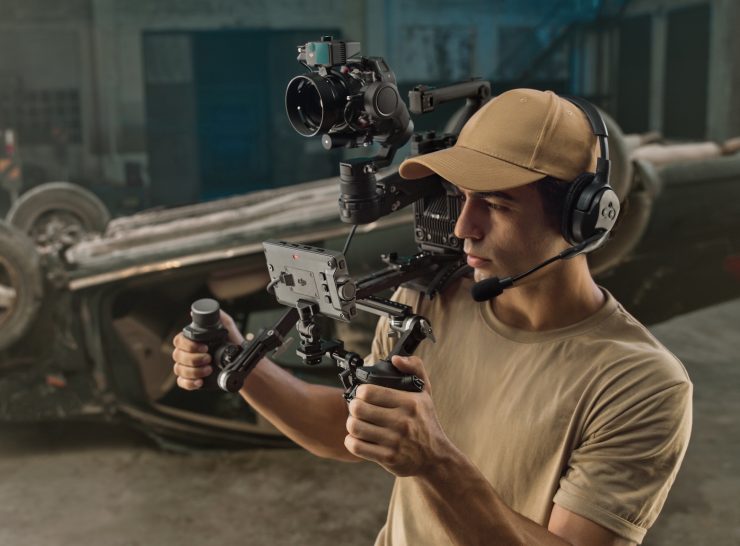
In a lot of ways, it is best to think of the Ronin 4D as a digital cinema camera with 4-axis image stabilization rather than a gimbal with a camera. DJI has designed it so it can be used handheld, on a tripod, by itself, or attached to a vehicle, crane, cable, etc.
Above you can watch DJI’s original live stream announcing the Ronin 4D.
DJI had five goals when designing the Ronin 4D:
- The fastest system setup
- The lightest weight in hand
- The freest camera movement
- The most affordable 8K RAW
- The easiest learning curve
The most affordable 8K RAW? That is certainly not the case. Cameras such as the Blackmagic URSA Mini Pro 12K, Canon R5, Canon R5C, Nikon Z9, etc. can all capture 8K RAW for a lot less money than a Ronin 4D-8K.
The Ronin 4D-8K Combo is capable of recording 8K in ProRes RAW, and the Combo Kit includes the RAW license. DJI presumably must have paid a licensing fee to be able to have use internal ProRes RAW in the Ronin 4D-8K and 4D-6K.
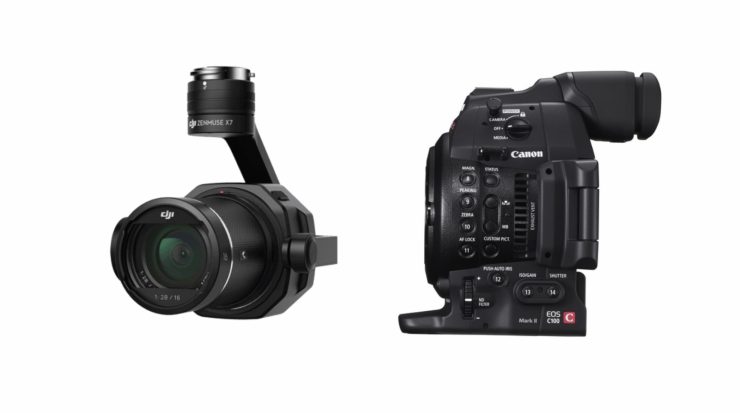
The Ronin 4D looks like a cross between a DJI Zenmuse X7 Camera and something like a Canon C100 Mark II.
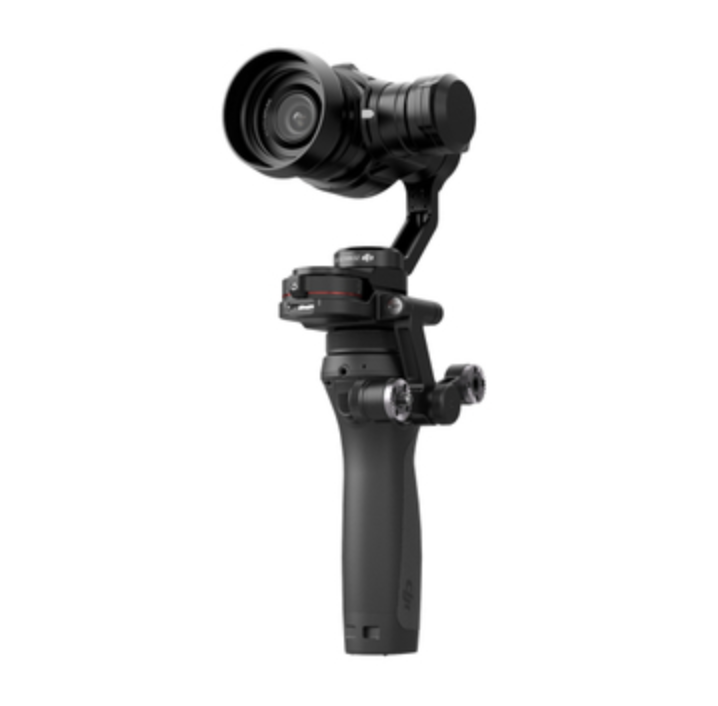
A lot of people were wanting a solution like this for a long time. DJI did bring out the OSMO PRO years ago, which was an integrated camera and gimbal solution but it never really took off and DJI never made a replacement. While the Ronin 4D-6K has been reasonably successful for DJI, it will be interesting to see how many people buy the 4D-8K.
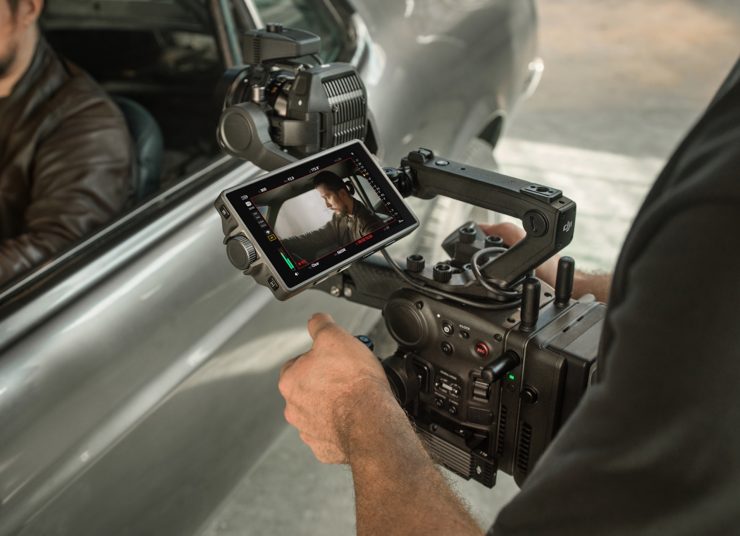
Ronin 4D-8K KEY FEATURES
- Zenmuse X9-8K Camera Gimbal Combo
- Z-Axis Camera/3-Axis Gimbal Stabilizing
- ProRes 422 HQ Video up to 8K30
- Right Focus/Control, Left Pan/Tilt Grips
- 5.5″ 1000 cd/m² Touchscreen Display
- LiDAR Range Finder/Focus Module
- 1 x ProSSD 1TB Media Card
- TB50 Intelligent Battery, Mount, Charger
- Carbon Fiber, Aluminum Magnesium Alloy
- Cables, Tools & Carrying Case
Sensor
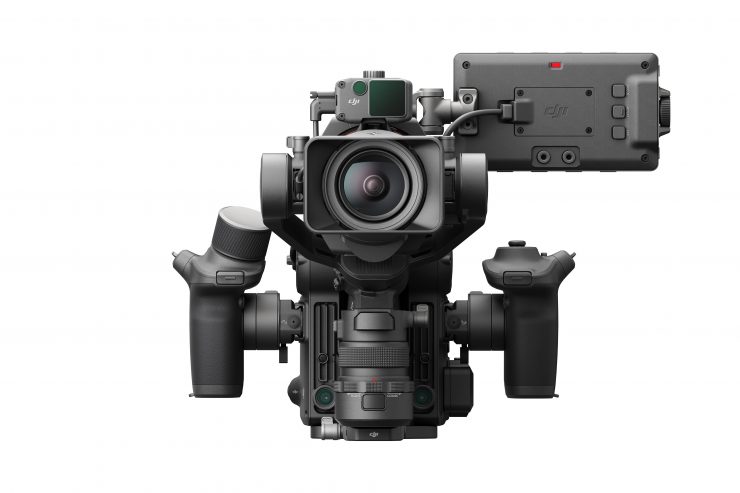
Both the X9-8K and X9-6K utilize a full-frame 36×24mm CMOS sensor. DJI also claims that they offer a high readout speed.
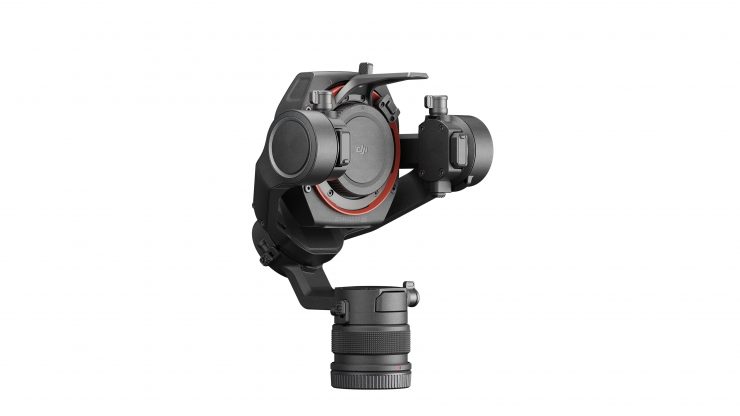
The effective pixel number of Zenmuse X9-8K is 35.4 MP and as a comparison, the X9-6K offers 24.1 MP.
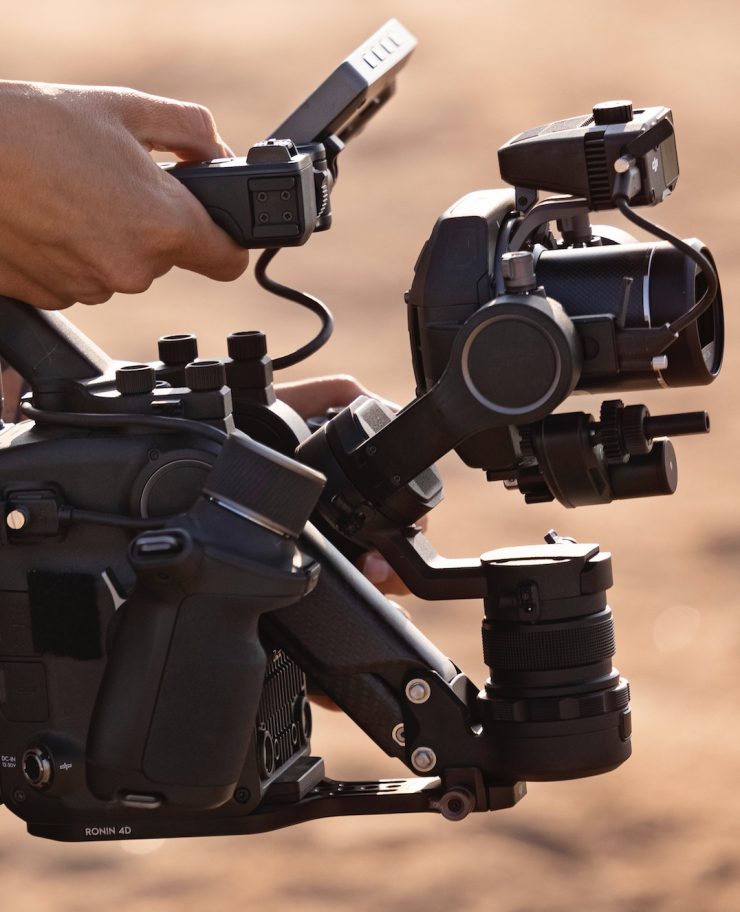
DJI is uses a processing engine that they are call CineCore3.0. DJI claims that the new Zenmuse X9 has over 14 stops of dynamic range.
The new color system consists of a new D-Log curve and a D-Gamut RGB color space. D-Gamut covers the entire DCI-P3 color space.
According to DJI, the DCCS color engine boasts a new algorithm, enabling smooth yet detailed images, high bit-width internal color and tone processing for natural transitions, and multiple high-precision LUT processing modules for precise color adjustments in diverse lighting conditions.
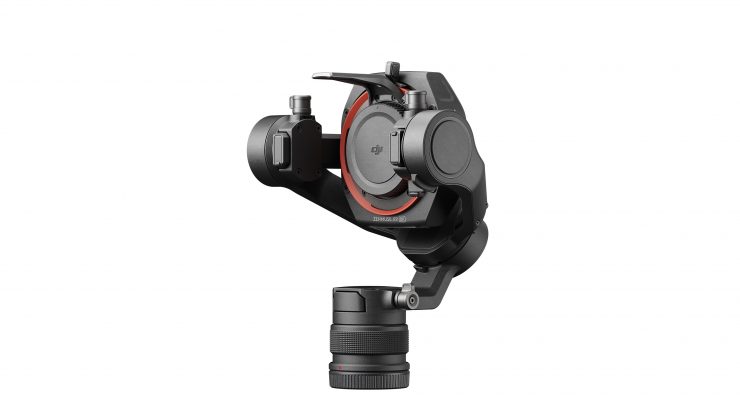
The X9-8K has a dual native EI of 800/4000. As a comparison, the 4D-6K has a dual native ISO of 800/5000. According to DJI, the Ronin 4D utilizes a proprietary DJI Cinema Color System (DCCS) that is claimed to deliver natural skin tones and enables effortless tonal consistency across a project when using different cinema cameras.
What lens mount is it and what lenses can you use?
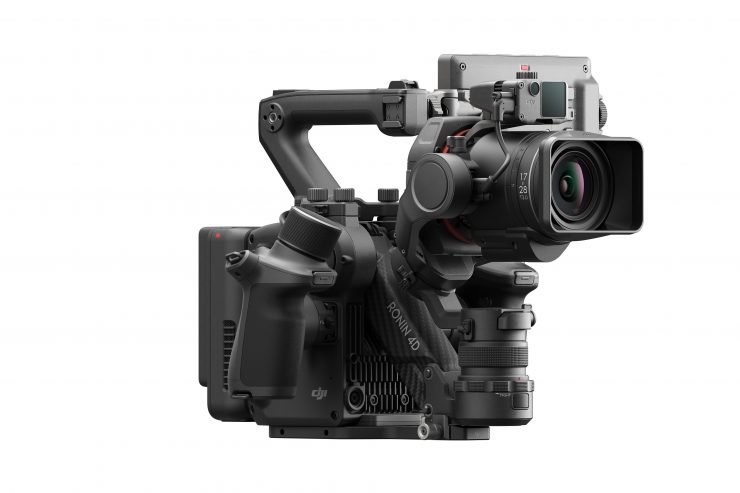
Just like the Ronin 4D-6K, the 4D-8K features an interchangeable lens mount design that allows connection to DJI’s proprietary DL mount, Leica M mount, and other mounts with short-flange focal distances, such as Sony E-mount.
The flange focal distance of the DL-Mount is less than 17 mm, which is roughly 1/3 of the size of a PL-Mount.
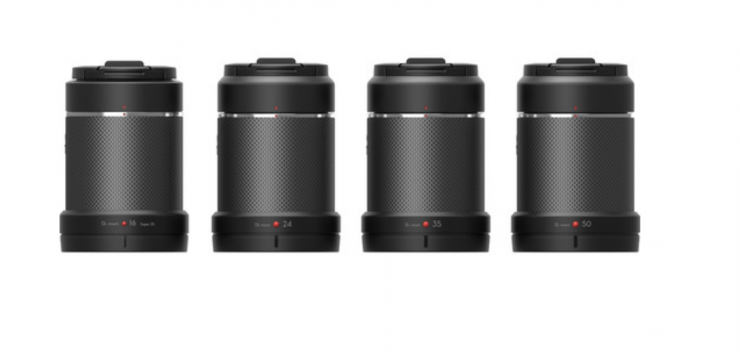
You can use lenses such as the DJI DL/DL-S Lens Kit for Zenmuse X which consists of:
- DJI 16mm f/2.8 ASPH ND Lens
- DJI 24mm f/2.8 ASPH LS Lens
- DJI 35mm f/2.8 ASPH LS Lens
- DJI 50mm f/2.8 ASPH LS Lens
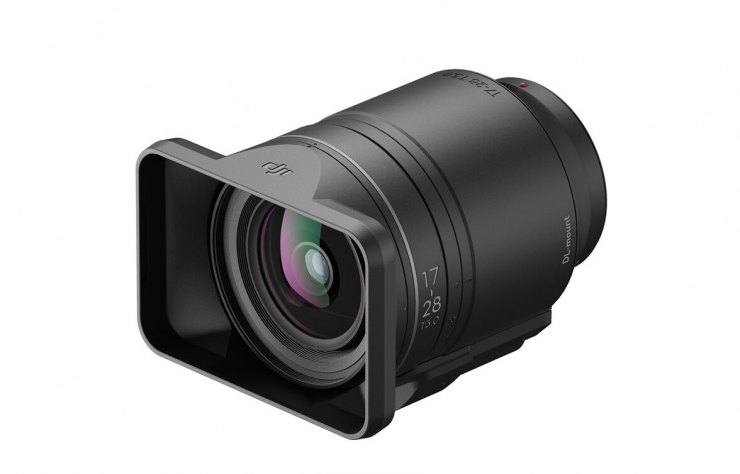
You can also use the DJI DL PZ 17-28mm T3.0 ASPH Lens.
A lot of users of the 4D-6K have been using mounts such as Sony E, where you have a much wider range of lenses to choose from.
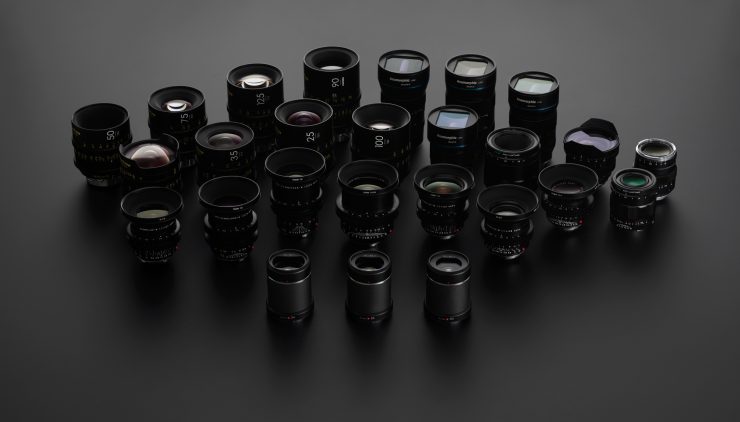
Above you can see some of the lenses that are supported by the Ronin 4D.
Recording & Recording Media
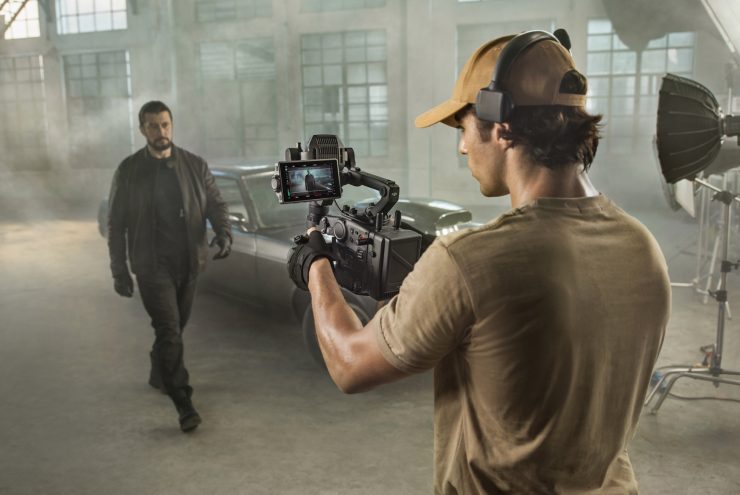
The Ronin 4D-8K utilizes the CineCore image processing platform that was developed by DJI to deliver high-quality digital intermediates for post-production. It is equipped with a proprietary chip and advanced processor architecture, and it supports up to 8K videos in professional codecs like Apple ProRes RAW, ProRes 422 HQ, H.264, and like on the Inspire 3, CinemaDNG.
Both the X9-8K and X9-6K can internally record H.264, Apple ProRes (4444XQ, 422HQ & 422)., ProRes RAW, and CinemaDNG. The Zenmuse X9-8K can capture up to 8K/75fps (2.39:1), and 8K/60fps (16:9). The X9-6K supports up to 6K/60fps and 4K/120fps.
In September 2022, DJI announced the ability to record in Apple ProRes 4444XQ and 422 LT and the ability to jam sync external timecode sources via the 3.5mm microphone port. You can also get a clean HDMI output through the HDMI port, and output 4K 4:2:0 60 fps through the HDMI when recording at 4K.
Now, there are a few caveats when recording in ProRes 4444XQ. You can’t output a signal over HDMI, the exposure assistant, peak focus and LiDAR waveform are disabled when recording ProRes 4444XQ video at 6K/48fps or 4K/96fps and above. I imagine the same thing will be true when using the 4D-8K.
Like ProRes RAW, ProRes 4444XQ can only be stored on the DJI PROSSD.
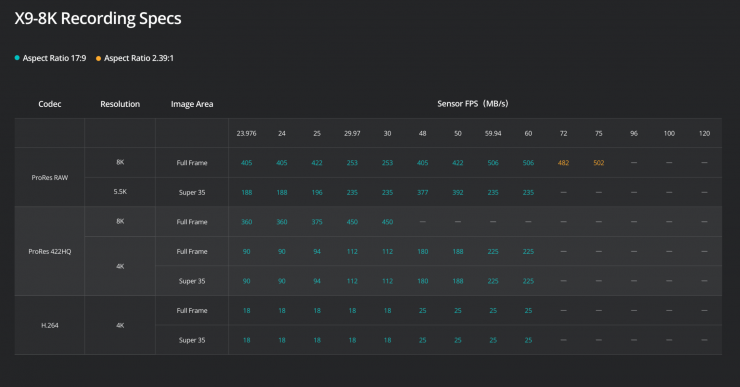
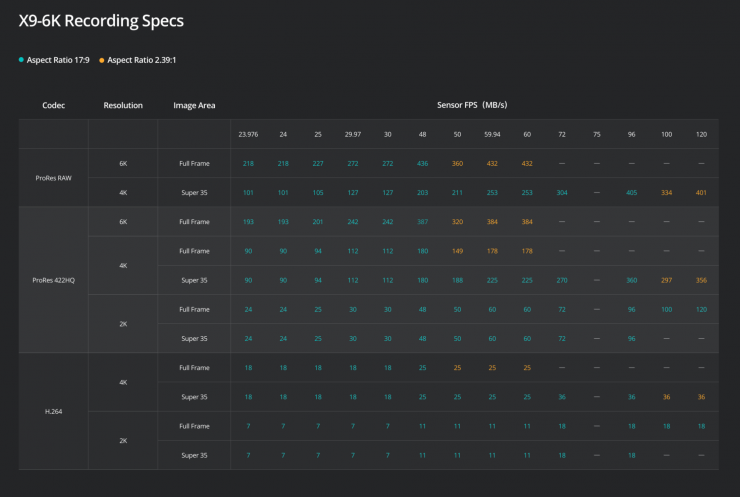
Above you can see detailed tables of all of the recording resolutions, frame rates and sensor modes that was originally unveiled back in 2021. As I previously mentioned, DJI’s plan to integrate ProRes RAW recording originally never got off the ground due to patent issues when the Ronin 4D-6K shipped, but in March 2023 they did announce a ProRes RAW license that cost $949 USD.
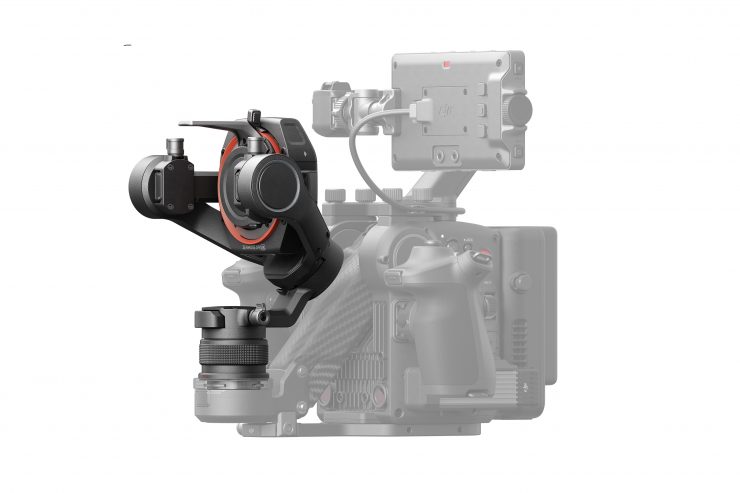
X9-8K
- 8K 75fps (2.39:1)
- 8K 60fps (16:9)
X9-6K
- 6K 60fps (2.39:1)
- 6K 48fps (17:9)
- 4K 120fps (2.39:1)
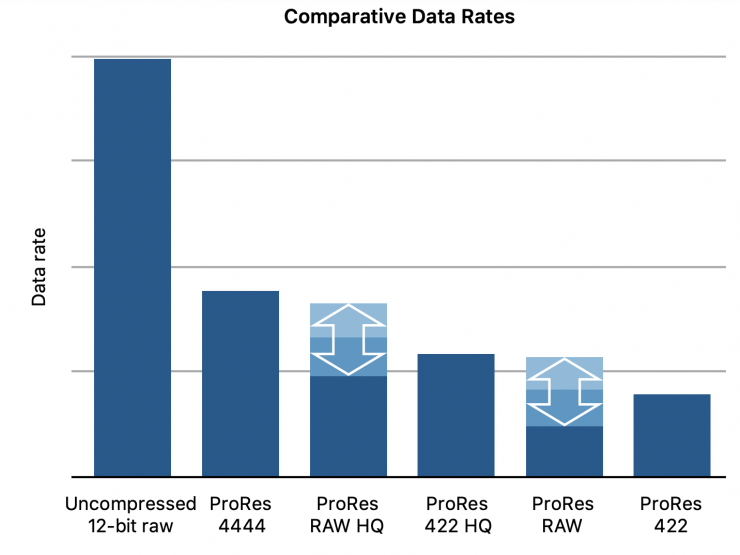
Apple ProRes RAW data rates generally fall between those of Apple ProRes 422 and Apple ProRes 422 HQ, and Apple ProRes RAW HQ data rates generally fall between those of Apple ProRes 422 HQ and Apple ProRes 4444.
- 1TB @ 8K30 ProRes RAW HQ: ~40 minutes
- 1TB @ 8K30 ProRes RAW: ~42 minutes
Above you can see a rough estimate of how much recording time you get when shooting 8K 30p ProRes RAW and ProRes RAW HQ to a 1TB drive.
| 8K DCI | ProRes RAW | ProRes RAW HQ |
| 24p | 160-370MB/s | 320-530MB/s |
| 25p | 160-390MB/s | 330-560MB/s |
| 30p | 200-480 MB/s | 400-680MB/s |
| 50p | 320-800 MB/s | 640-1120MB/s |
| 60p | 400-920 MB/s | 800-1320 MB/s |
Above you can see estimated data rates at various frame rates at 8K resolution when shooting in ProRes RAW and ProRes RAW HQ respectively.
The data rates when shooting 8K 60p in ProRes RAW are up to 3.95Gbps.
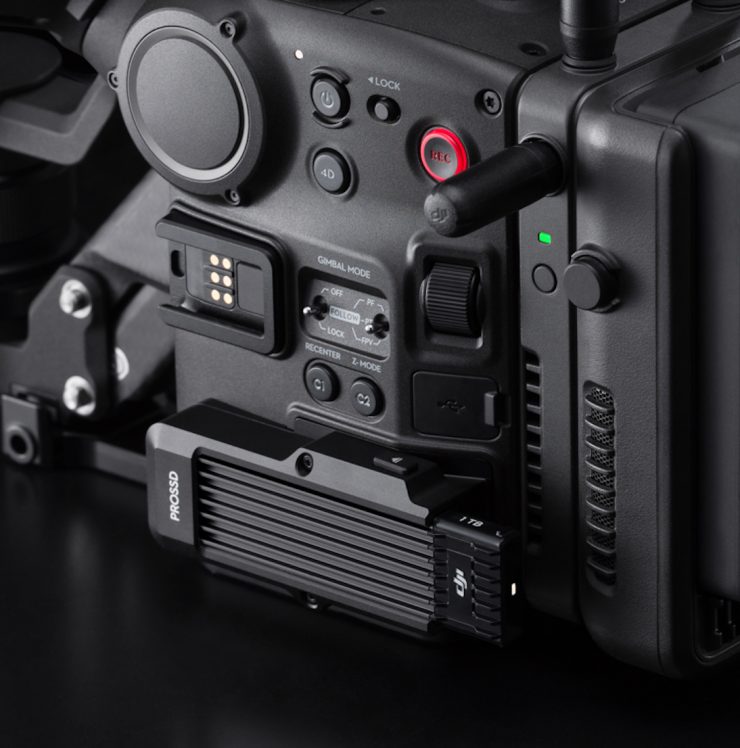
Three storage methods are offered with the DJI Ronin 4D:
- USB SSD
- CFexpress Type B
- DJI’s proprietary PROSSD 1TB
USB SSD is a good solution for those users recording in 4K who are looking for a cost-effective media solution. CFexpress Type-B card offers a good compromise between price and performance, while. DJI’s proprietary PROSSD 1TB delivers the best performance and highest stability for internal recording at maximum resolution and frame rates.
The PROSSD module attaches into the same section as where the CFexpress card goes.
CFexpress Type B Recording capabilities
ProRes 422 HQ:
6K: 23.976/24/25/29.97/30fps
C4K: 23.976/24/25/29.97/30/48/50/59.94/60/72/96/100/120fps
2K: 23.976/24/25/29.97/30/48/50/59.94/60/72/96/100/120fps
H.264:
C4K: 23.976/24/25/29.97/30/48/50/59.94/60/72/96/100/120fps
2K: 23.976/24/25/29.97/30/48/50/59.94/60/72/96/100/120fps
USB-C SSD Recording capabilities
ProRes 422 HQ:
C4K: 23.976/24/25/29.97/30/48/50/59.94/60fps
2K: 23.976/24/25/29.97/30/48/50/59.94/60fps
H.264:
C4K: 23.976/24/25/29.97/30/48/50/59.94/60fps
2K: 23.976/24/25/29.97/30/48/50/59.94/60fps
Built-in ND
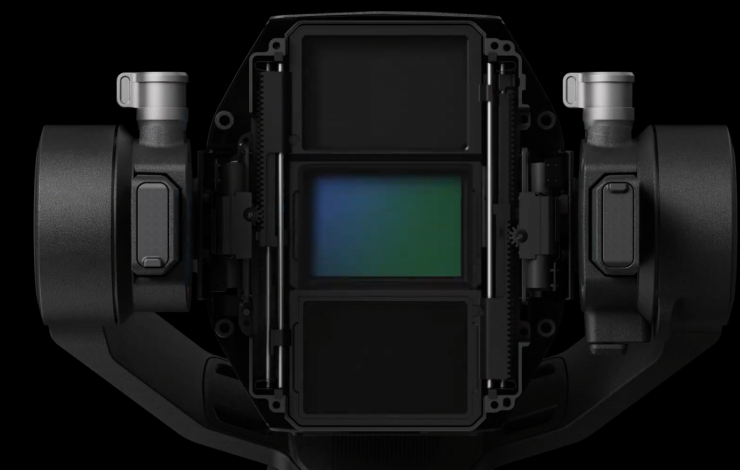
DJI has incorporated a built-in ND system for the Ronin 4D. Users can adjust the ND from a range of 2 up to 512 (9 stops). This is a physical ND system and not an electronic one.
Below are the ND steps that are available.
Clear, 2 (0.3), 4 (0.6), 8 (0.9), 16 (1.2), 32 (1.5), 64 (1.8), 128 (2.1), 256 (2.4), 512 (2.7)
LiDAR Focusing System & AF
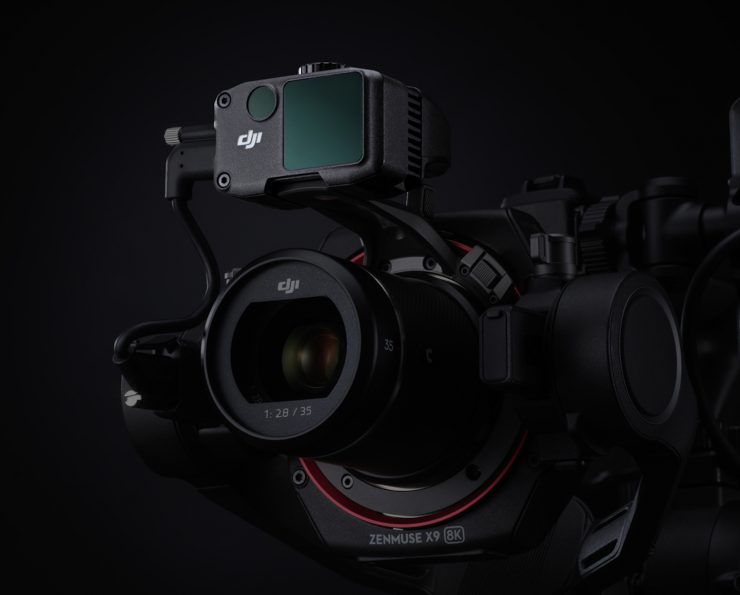
One of the most interesting features of the Ronin 4D platform is the ability to use the optional LiDAR Focusing System.
In case you are not familiar with LiDAR, LiDAR stands for light detection and ranging. Essentially it is a technique where a module is used to send out ten of thousands of bursts of invisible light that then reflect off an object in space. This information is then used to create a real-time 3D point cloud map. The LiDAR system continually updates this 3D map in real-time so that you can do accurate lens focusing. It will be interesting to see just how well it works on the Ronin 4D, because previous similar systems that were available from DJI only worked well if objects were centrally located towards the middle of the frame. The 3D focusing system of DJI RS 2 uses single-point focusing that only focuses on the center of the target, while the LiDAR Range Finder can cast 43,200 ranging points, enabling faster and more accurate focusing and providing visual focusing with the LiDAR Waveform.
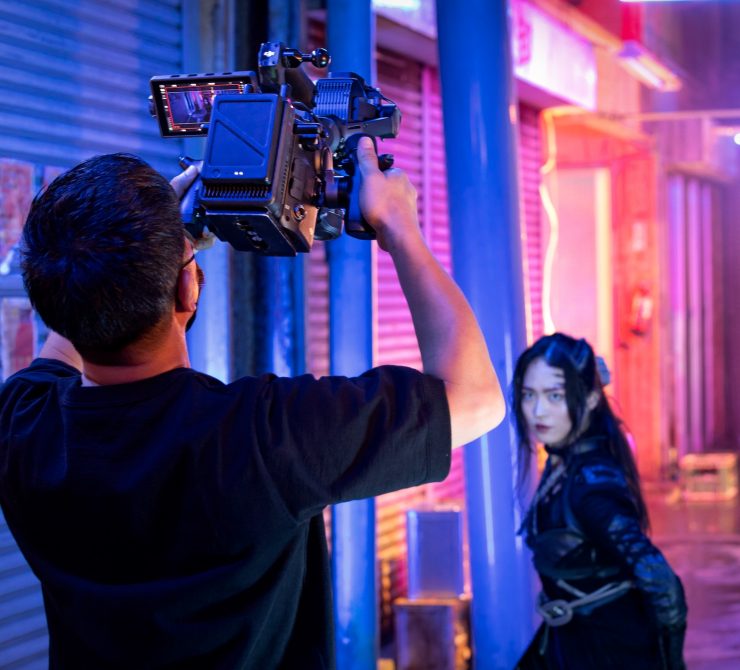
So what does LiDAR do on the Ronin 4D? The Ronin 4D’s LiDAR Range Finder creates a real-time 3D cloud of 43,200 points at once for a focusing range of up to 10m / 32.8ft. DJI claims that it also works well in low lighting environments.
The system can achieve the following three objectives:
- LiDAR Waveform– This is an assistive focusing display that allows users to locate and pull focus to points with extreme precision
- Autofocus– 3rd party manual lenses can gain AF via the X9 Focus Motor. AF is also maintained when using ActiveTrack Pro.
- Automated manual Focus– Allows
Along with LiDAR, theRonin 4D offers manual focus, autofocus, and DJI’s unique Automated Manual Focus (AMF). When using manual focus, the DJI Ronin 4D provides LiDAR Waveform, an assistive tool that allows you to locate focus points and pull focus with extreme precision. Autofocus is, well, autofocus. Just how well the AF works on the Ronin 4D will be interesting to see and it will probably depend on the lens mount and lens you are using. DJI has never been known for having great AF. Automated Manual Focus combines the best of both modes to automatically rotate the focus wheel while following the focus point, allowing the operator to intervene manually at any time.
4-Axis Stabilization System
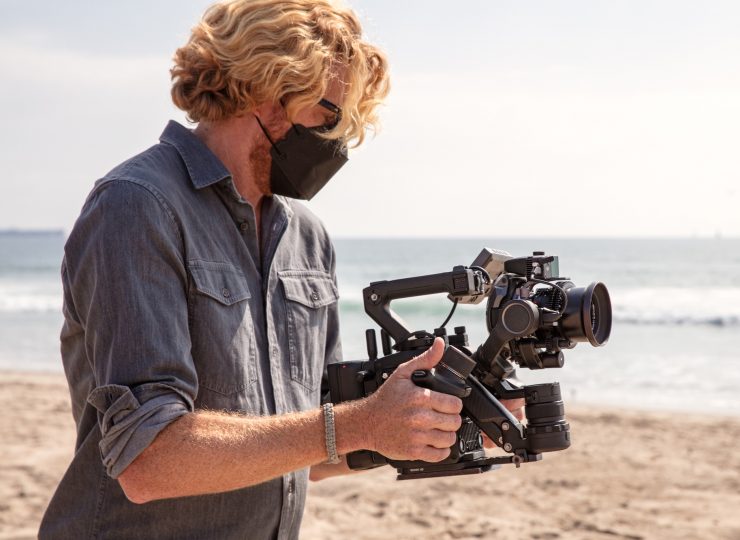
The Ronin 4D features a 4-Axis stabilization system. What’s the 4th axis? Well, it’s the Z-axis. This is the axis where when you are walking or running with most gimbals causes that up and down movement. The Ronin 4D’s Z-axis vertical stabilization eliminates vertical shake via forward and downward visual sensors, dual ToF sensors, a barometer, and a gyro sensor.
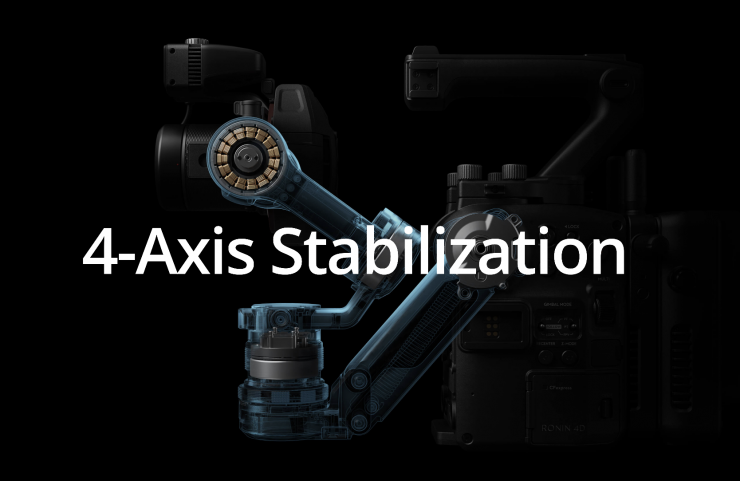
If you look at the front of the Ronin 4D you will see an arm that goes up at an angle from the front of the gimbal. This is what helps control that up and down movement.
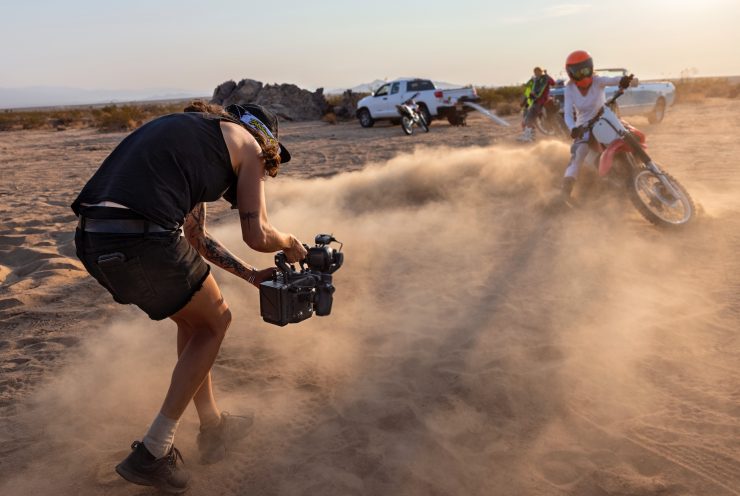
This 4th axis allows users can create smooth footage while walking, running, going up, or downstairs, without any up and down movement that is associated with the operator walking or running.
The Ronin 4D does support underslung shooting, but the Z-axis is not available in underslung mode.
As you would expect from a DJI product, the Ronin 4 also features ActiveTrack Pro so that users can track subjects.
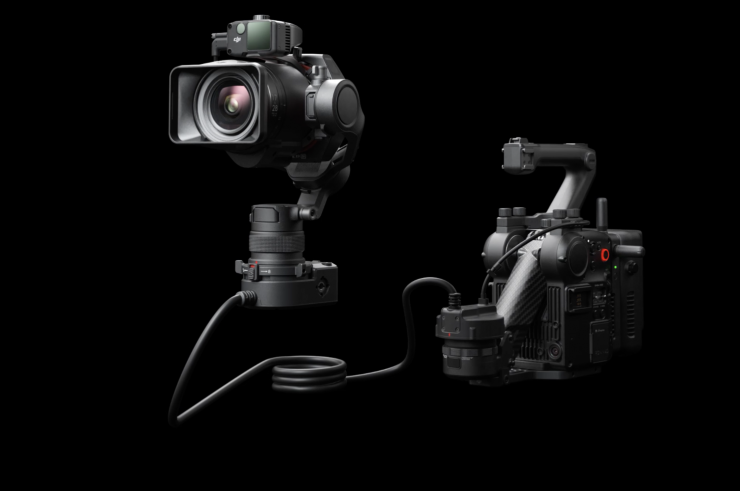
You can also use the optional Ronin 4D Flex, if you want to separate the gimbal from the camera.
How is it powered?
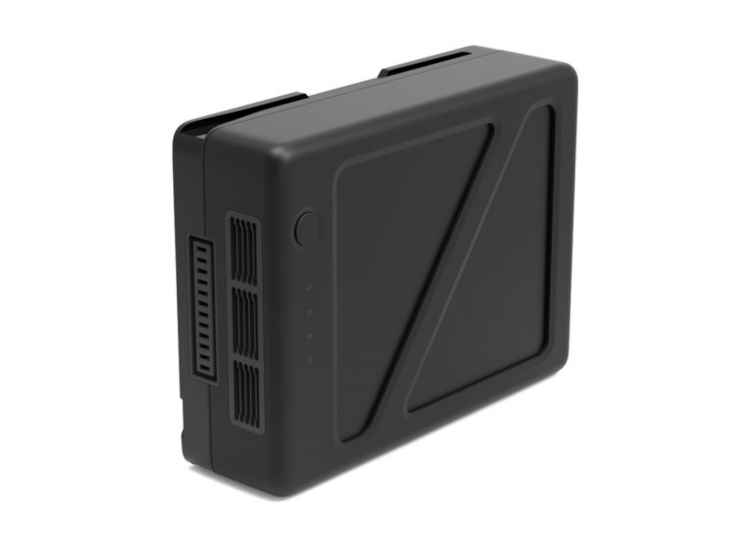
Both the Ronin 4D-8K and 6K are powered via a DJI TB50 Intelligent Battery that sits on a battery plate. This is the same battery that is used on the Ronin 2 and DJI Inspire 2. These batteries have a 4280mAh capacity and retail for $179USD.
High Bright Monitor, Wireless Transmission & Control System
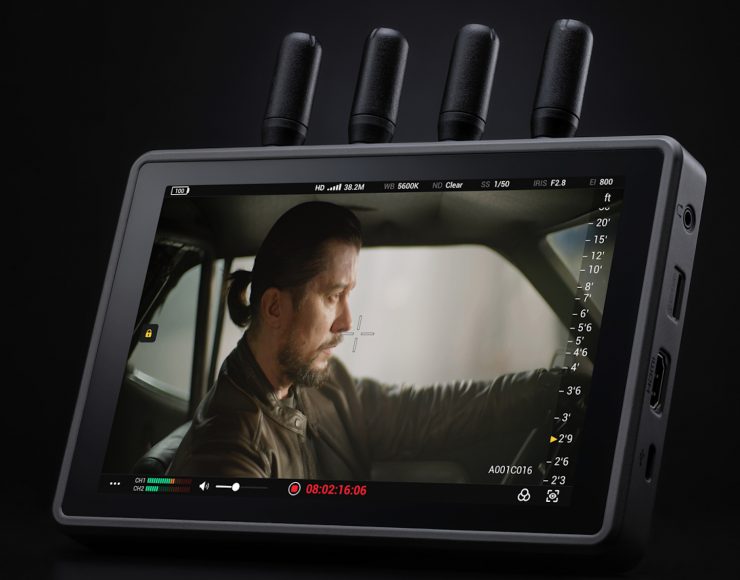
The 4D-8K Combo comes with a High-Bright Remote Monitor integrates a wireless video receiver into a 1,500-nit, 7-inch monitor. The built-in gyro sensor also turns the monitor into a motion controller for movement-based camera control. It can also connect to the Ronin 4D Hand Grips, DJI Master Wheels, DJI Force Pro, or the new DJI Three-Channel Follow Focus to modernize coordinated shoots. When several remote monitors are used in conjunction, each device can play back material separately with independent LUT, loaded without interfering with other monitors. The monitor’s built-in microSD card slot supports up to 1080p/60fps proxy footage recording.
Multiple receivers can be connected to the 4D Video Transmitter so you can switch between Ronin 4D feeds.
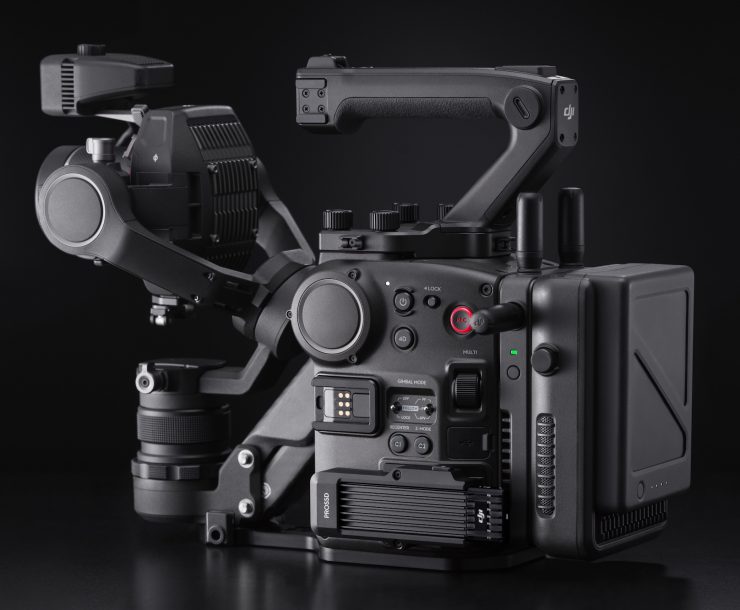
The optional 4D Video Transmitter can send up to 1080p/60fps from distances of 6km / 3.72 miles away. This feed is claimed to have ultra-low latency and good stability.
In addition to 2.4GHz and 5.8GHz, O3 Pro also supports the DFS frequency band, significantly improving stability and anti-interference performance, even in crowded signal environments and locations that feature complex architectural structure
Hand Grips
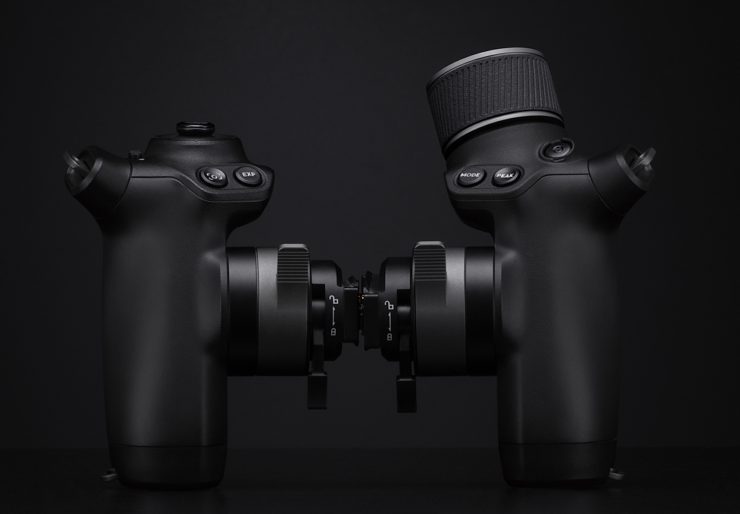
The 4D-8K comes with a set of hand grips that allow you to control various aspects of the Ronin 4D.
Audio & Expansion Plate
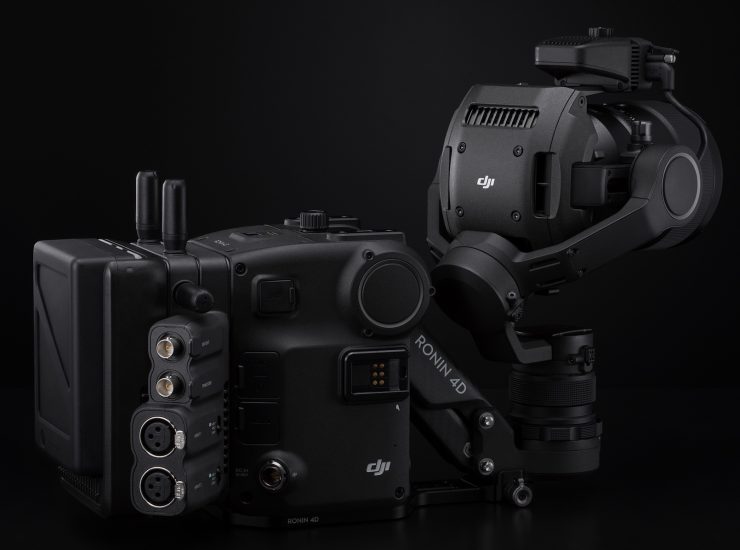
The DJI Ronin 4D has built-in microphones to support 2-channel 24-bit audio, as well as two 3.5mm jacks on the body.
The expansion plate adds two XLR inputs and an SDI out and a timecode out.
Pricing & Availability
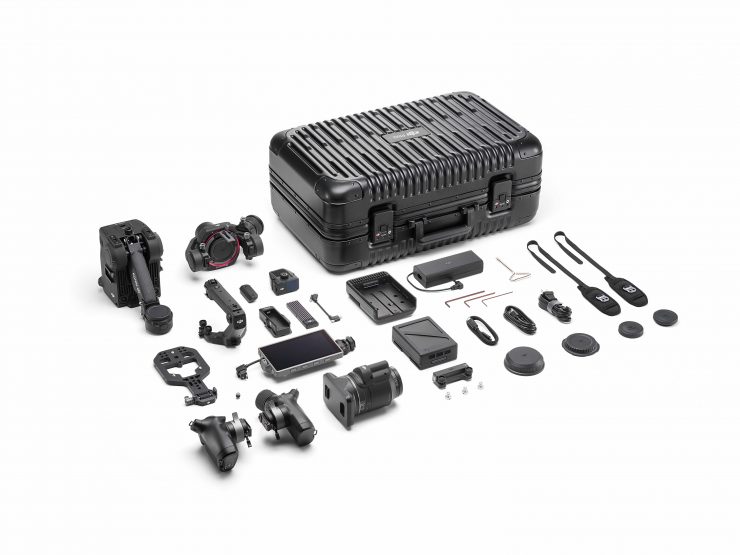
The Ronin 4D-8K combo includes the Ronin 4D Main Body, a Zenmuse X9-8K Gimbal Camera, a DJI DL PZ 17-28mm T3.0 ASPH Lens, a PROSSD 1TB, a PROSSD Mount, Hand Grips, a Top Handle, a High-Bright Main Monitor, a TB50 Intelligent Battery, a LiDAR Range Finder, a DJI Ronin 4D RAW License Key and more. The combo retails for $12,838 USD, although B&H has it listed for $11,499.00 USD.
The Zenmuse X9-8K Gimbal Camera is also available for purchase, retailing at $3,599 USD, and includes a Zenmuse X9-8K Gimbal Camera Protector Case, a X9 Gimbal Base Cap and a DL Mount Body Cap.
DJI Care Pro is now available for DJI Ronin 4D-8K, providing comprehensive protection for accidental damage. An unlimited number of free repairs are provided within the coverage limit for water damage, drop damage, improper use, and other accidents, together with International Warranty Service and two maintenance services by DJI technical experts.
Below is how much the DJI Ronin 4D-6K costs and what is included:
- Zenmuse X9-6K Gimbal Camera
- LiDAR Range Finder
- Ultra-Bright Main Monitor
- Hand Grips
- Top Handle
- TB50 Intelligent Battery
- Battery Mount
- Carrying Case
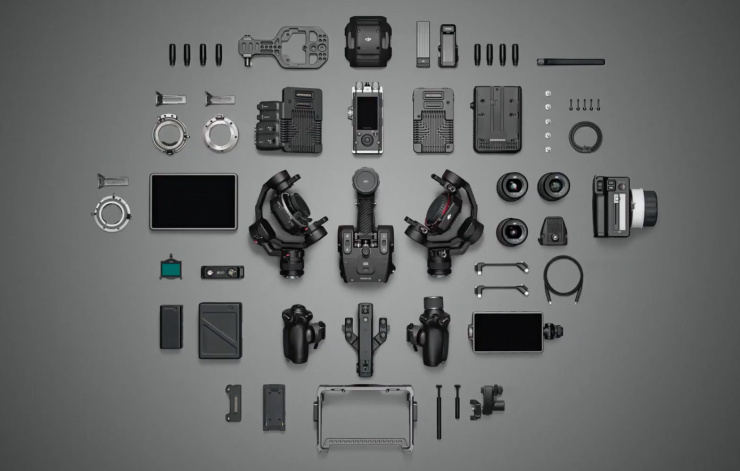
There are also plenty of other optional accessories that can be used within the Ronin 4D ecosystem.
Thoughts
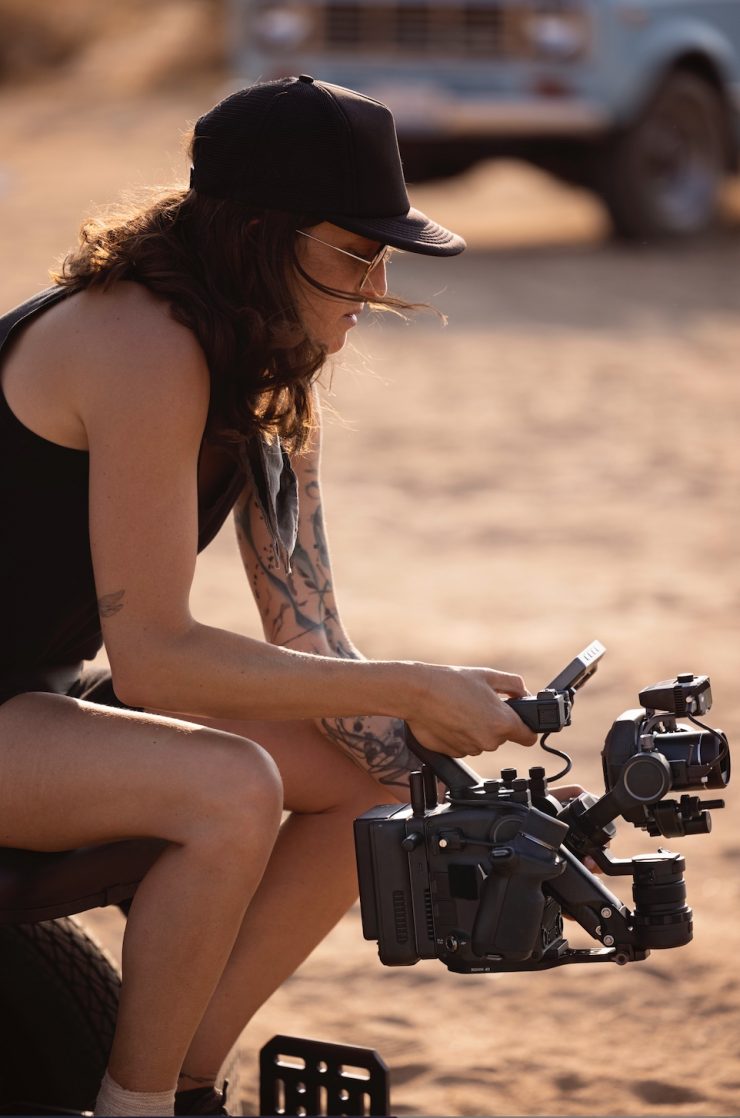
It is slightly odd that DJI is only now choosing to release the Ronin 4D-8K, especially since the 4D-6K version has been out for so many years now. I could understand this decision if the Ronin 4D platform had have been upgraded or a new version was available, but essentially the 4D-8K is just a 8K version of what already exists.
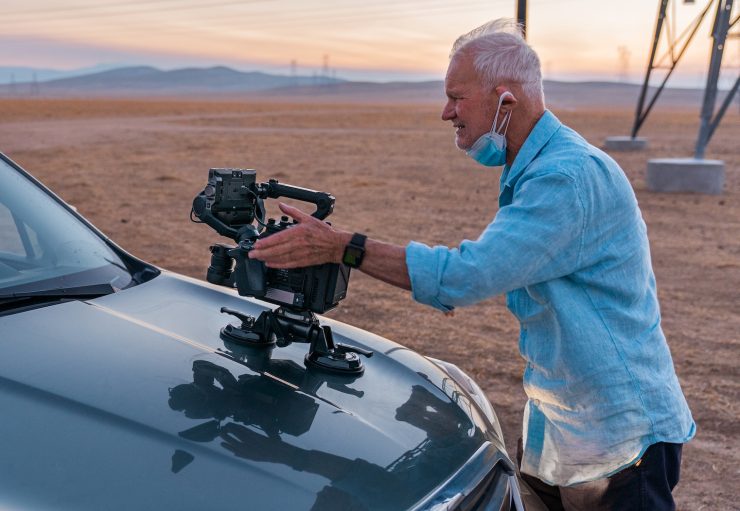
Quite a lot of thought and development went into the Ronin 4D, but with the 4D-8K version only now becoming available I would assume that we won’t be seeing a Ronin 4D II anytime soon.
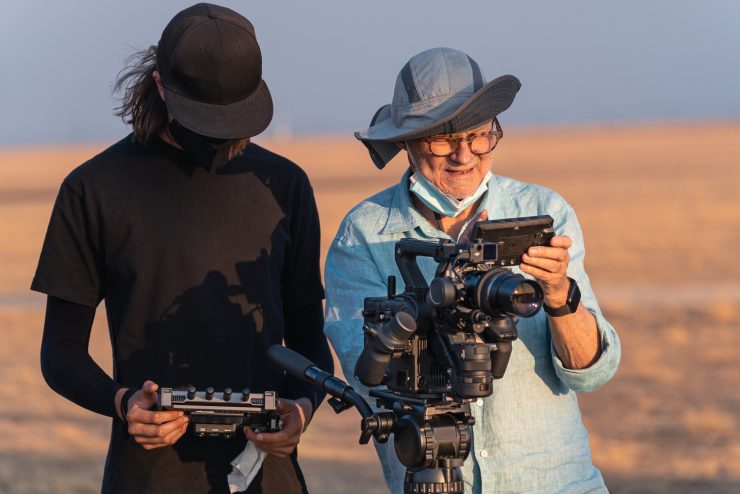
When the Ronin 4D was originally launched more than 3 years ago, the pricing for the 4D-6K was arguably very competitive given its feature set and capabilities. However, a lot has changed in the last 3 years and we now have lots of camera options available that offer very good value for money. You could arguably make a case that the Ronin 4D-8K is going to be a hard sell given that it is essentially just an 8K version of a 3 years old product. $12,838 USD for the combo is a lot of money to pay, especially when we now have some very feature rich and impressive digital cinema cameras and mirrorless hybrids available that cost significantly less money.
Having an all-in-one system that you can just pick up and start shooting with does make a lot of sense, but on the flip side, it does somewhat lock you into a particular system and you do lose that versatility of being able to swap over camera systems.
I do like that DJI has at least made the Zenmuse X9-8K available as a separate purchase, so if you dod want to upgrade your Ronin 4K-6K you can.
What do you think of the DJI Ronin 4-8K? Would you buy one? Is it too late? Let us know your thoughts in the comment section below.

